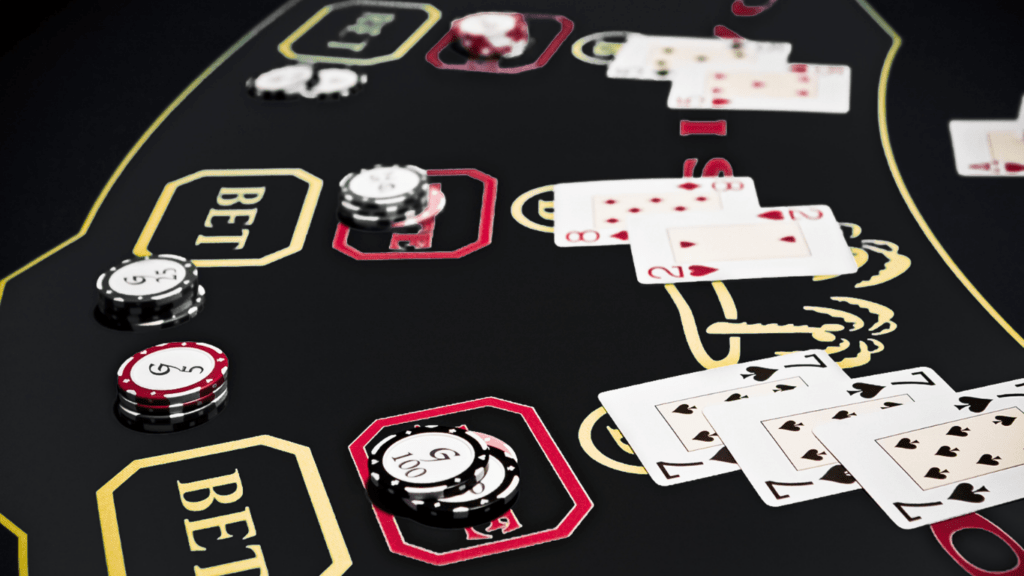Understanding Card Counting
Card counting, often misrepresented, involves tracking the ratio of high to low cards left in a deck to gain an edge in blackjack.
The Basics of Card Counting
Card counting assigns point values to cards to determine the relative number of high or low cards remaining.
High cards (10, J, Q, K, A) get a negative value, while low cards (2-6) get a positive value. Neutral cards (7-9) are counted as zero.
For instance, in the popular Hi-Lo system, high cards (-1), low cards (+1), and neutral cards (0) are used. The “running count” adjusts after each card is dealt.
Legal Aspects and Casino Policies
While not illegal, casinos dislike card counters and can ban players suspected of counting.
The Nevada Gaming Control Board confirms this practice is legal, but casinos hold the right to refuse service to anyone.
Casinos employ various countermeasures like frequent shuffling, multiple decks, and surveillance to deter card counting.
Debunking Popular Card Counting Myths
Many myths surround card counting, often deterring players from learning its actual impact and feasibility.
Myth 1: It’s Illegal to Count Cards
Card counting’s legality often comes under scrutiny. It’s important to note that no laws prohibit card counting since it’s a mental exercise.
However, casinos reserve the right to refuse service to anyone suspected of counting cards, empowering them to ban players accordingly. Casinos do this through heightened surveillance and frequent shuffling.
Myth 2: You Must Be a Math Genius
A common misconception is that only geniuses can count cards. In reality, basic arithmetic skills suffice for effective card counting. Most systems, like the Hi-Lo strategy, use simple addition and subtraction.
While advanced mathematical skills might enhance your game, they’re not essential to getting started.
Myth 3: Card Counting Guarantees Huge Profits
Believing that card counting ensures massive winnings is misguided.
Though it indeed provides an edge over the house, the advantage is typically small, often around 1-2%. Profits depend heavily on factors like:
- bankroll management,
- game conditions
- table limits
Long-term success requires discipline, patience, and a sound betting strategy.
Real-Life Stories of Card Counters

Professionals and amateurs alike have tried their hand at card counting in blackjack, with mixed results. These stories reveal both the successes and the challenges faced by card counters.
Success Stories
Ken Uston, a famous card counter, led teams to win millions in the 1970s.
By using team strategies, players disguised their counts, making it harder for casinos to detect and ban them.
His successes showed card counting’s potential when executed well.
The MIT Blackjack Team serves as another iconic example.
During the 1990s, they utilized sophisticated strategies and team play to exploit casino rules, earning substantial profits.
Their story, popularized by books and movies, underscores the effectiveness of disciplined, team-based card counting.
Challenges and Failures
Not every card counter escapes unscathed.
Casinos have advanced security measures, such as:
- surveillance cameras
- facial recognition technologies,
to identify and thwart card counters.
For example, many members of the MIT Blackjack Team eventually faced bans from various casinos, limiting their ability to continue card counting.
Independent card counters often face difficulties maintaining focus and discipline.
Ben Mezrich’s book, “Bringing Down the House,” highlights individuals who struggled with the mental stamina required for extended card counting sessions.
One lapse in concentration can negate several hours’ worth of careful counting.
Professionals known for counting frequently face countermeasures, such as frequent deck shuffling by dealers, which resets the count and diminishes any potential advantage.
Additionally, aggressive casino behaviors like denial of service and ejection complicate consistent wins.
These stories uncover the dual-sided nature of card counting: the promise of profits and the pitfalls that come with the territory.
The Role of Technology in Card Counting
Technology significantly impacts card counting in modern casinos. Both software and devices revolutionize card counting, while automatic shufflers present new challenges.
Software and Devices Used in Card Counting
Several software applications and devices aid card counters in tracking cards.
Computer programs analyze sequences and probabilities, providing real-time advice. Mobile apps simulate card counting practice, helping users hone their skills.
Wearable devices (e.g., hidden earpieces) discreetly relay information to players for strategic advantage, though most casinos ban such gadgets once detected.
Effect of Automatic Shufflers on Card Counting
Automatic shufflers disrupt traditional card counting methods. Continuous shuffling machines (CSMs) keep the deck in constant motion, rendering card tracking ineffective.
Even traditional shufflers reduce predictability by randomizing card positions between rounds.
This technology poses a significant hurdle for counters by neutralizing their primary advantage in estimating card probabilities.



